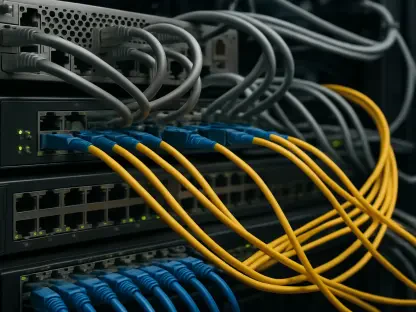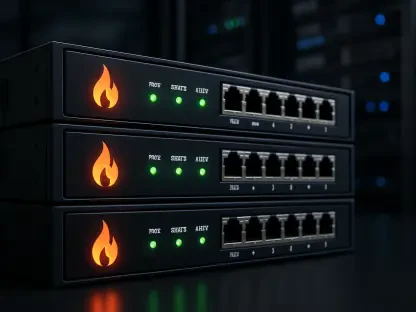Welcome to an exciting conversation about the future of AI hardware and Malaysia’s emerging role in the global semiconductor landscape. I’m thrilled to be speaking with Matilda Bailey, a renowned networking specialist with deep expertise in cutting-edge technologies like cellular, wireless, and next-gen solutions. With her finger on the pulse of industry trends, Matilda offers unique insights into Malaysia’s groundbreaking unveiling of its first AI device chip and what it means for the global tech race.
Can you walk us through the significance of the MARS1000 chip introduced by SkyeChip? What sets it apart as Malaysia’s pioneering edge AI processor?
Absolutely, the MARS1000 is a landmark achievement for Malaysia. As the country’s first edge AI processor, it represents a bold step into designing hardware tailored for AI applications right at the device level. What makes it special is its focus on edge computing—think of it as bringing AI smarts directly into everyday gadgets like cars or robots without needing constant cloud connectivity. This is a big deal for a nation looking to carve out a niche in the global AI hardware space, showing they’re not just assembling chips but innovating at the design level.
How would you explain the role of an edge AI processor to someone unfamiliar with the tech? Can you paint a picture of its real-world applications?
Sure, think of an edge AI processor as the brain inside a device that makes smart decisions on the spot. Unlike traditional setups where data gets sent to a distant server for processing, an edge chip handles things locally. Imagine a self-driving car—it uses edge AI to instantly process sensor data to avoid obstacles, without waiting for a cloud server’s response. Same goes for robots in factories; they can react to changes in real-time. It’s all about speed, efficiency, and sometimes even privacy, since less data leaves the device.
When you compare the MARS1000 to high-end AI chips that power massive data centers, where does it stand? What are its unique advantages or trade-offs?
The MARS1000 isn’t in the same league as the heavy hitters that run data centers—those are built for training complex AI models with immense computational power. Instead, the MARS1000 shines in smaller, device-specific tasks. Its advantage is efficiency; it’s designed to use less power and work in compact spaces, which is perfect for edge devices. The trade-off is raw power—it can’t handle the scale of data center workloads, but it’s not meant to. It’s about doing specific jobs really well, right where the action is.
Malaysia is making a strong push to expand its footprint in the global chip supply chain. What strategies or initiatives are driving this ambition?
Malaysia’s government is going all-in to move beyond just being a manufacturing hub. They’re focusing on climbing the value chain—think chip design and advanced fabrication, not just packaging. There’s a hefty investment of around $6 billion from the current administration to support this, targeting areas like AI hardware development and infrastructure for data centers. Plus, they’re leveraging their established role in semiconductor packaging to attract partnerships and build local expertise. It’s a long-term play to position Malaysia as a key player in tech innovation.
Speaking of that $6 billion investment, can you break down where this funding might be headed and how it could shape Malaysia’s tech landscape?
From what’s been shared, this investment is likely spread across a few critical areas. A big chunk probably goes into fostering chip design capabilities—supporting companies like SkyeChip to innovate. Then there’s infrastructure for AI data centers, which are popping up fast in Malaysia thanks to global demand. Some funds might also boost wafer fabrication facilities to reduce reliance on foreign production. This kind of spending could transform Malaysia into a hub for both creating and hosting AI tech, creating jobs and drawing international attention.
Malaysia’s history as a semiconductor packaging hub seems to give it a leg up. How does this background play into its new focus on AI technology?
It’s a huge advantage. Malaysia already has the infrastructure, skilled workforce, and relationships with global suppliers for packaging chips. That foundation means they’re not starting from scratch when diving into AI tech. They can build on existing facilities and expertise to move into design and advanced manufacturing. It also makes them attractive to foreign investors who want a reliable partner with a proven track record. This background basically shortens the learning curve and speeds up their push into cutting-edge areas like AI.
There’s also a surge in AI data center investments in Malaysia from major global players. What factors are fueling this trend?
A few things are coming together here. First, Malaysia offers a strategic location in Southeast Asia with solid connectivity, which is critical for data centers. Then there’s the cost advantage—land, labor, and energy are relatively affordable compared to other tech hubs. Add to that the government’s proactive policies, like incentives for tech investments, and you’ve got a compelling package. The growing regional demand for cloud and AI services also makes Malaysia a logical spot for these facilities. It’s becoming a sweet spot for tech giants looking to expand.
Shifting gears to some challenges, there’s been concern from certain administrations about AI chip flows through Malaysia. How is the country responding to these issues?
Malaysia’s taken these concerns seriously, especially around the risk of chips being diverted to restricted markets. The government has publicly stated they won’t tolerate illicit trade and has started tightening export controls, particularly for chips involving sensitive tech. They’re working to align with international standards and reassure partners that they’re a trustworthy link in the supply chain. It’s a delicate balance—maintaining open trade while clamping down on misuse—but they’re showing commitment to transparency.
Looking at the bigger picture, what do you see as the toughest obstacles Malaysia faces in advancing its position in the global semiconductor and AI arena?
One major hurdle is talent—building a deep pool of engineers and researchers who can drive innovation in AI and chip design takes time. Then there’s the competition; countries with longer histories in high-end tech have a head start. Infrastructure is another piece—while Malaysia is investing heavily, scaling up advanced fabrication and testing facilities isn’t quick or cheap. Lastly, geopolitical tensions around chip trade could complicate partnerships or access to cutting-edge tech. It’s a steep climb, but they’ve got momentum.
As we wrap up, what’s your forecast for Malaysia’s role in the global AI and chip industry over the next decade?
I’m optimistic. If Malaysia keeps up this pace—investing in talent, infrastructure, and strategic partnerships—I see them becoming a significant regional hub for AI hardware and data services within the next ten years. They might not overtake the biggest players, but they could carve out a strong niche in edge AI and mid-tier chip production. Their location and government support are big assets. It’ll be exciting to watch how they navigate the challenges and capitalize on the AI boom.









